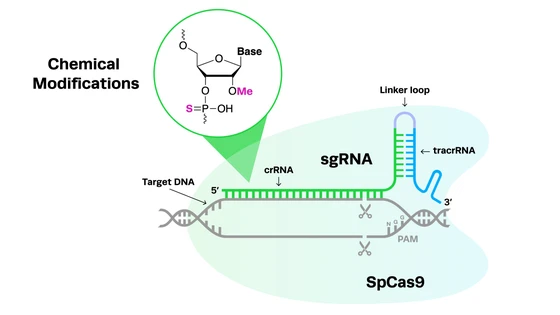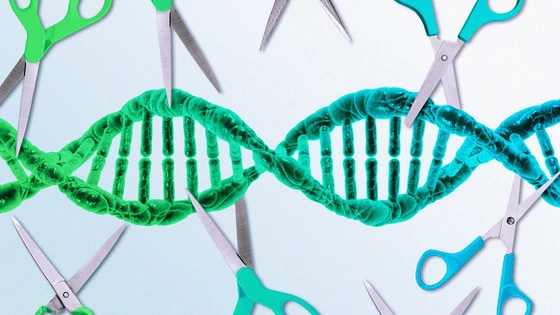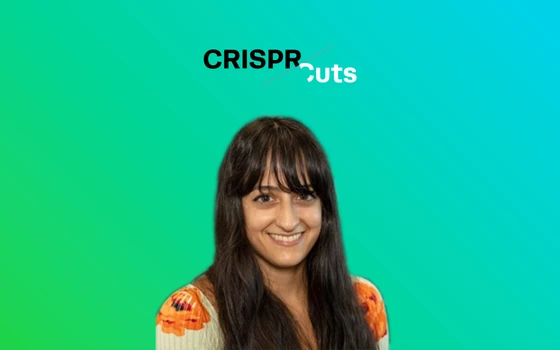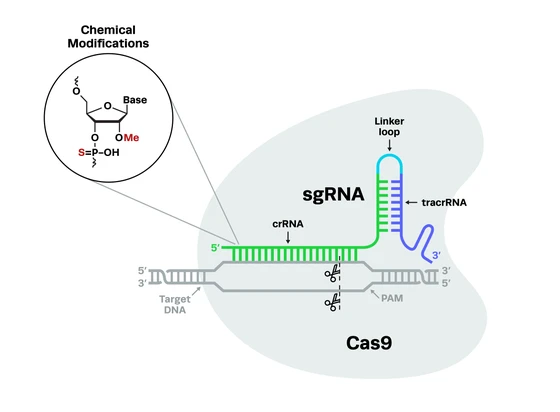October 2020 has been a special month for CRISPR. First, Dr. Jennifer Doudna and Dr. Emmanuelle Charpentier received the Nobel Prize for their discovery of CRISPR. Secondly, we celebrated our first World CRISPR Day, a virtual event that brought together 30+ genome engineering leaders on one platform last week. With over 12000 registrants, the conference was a perfect ode to this revolutionary genome editing technology.
The scientific symposium opened with Dr. Jennifer Doudna’s keynote speech, followed by 8 sessions spanning a range of application areas, from agriculture to drug discovery. The conference ended on a high with a panel on the future of genome engineering with the scientists and producers of the Human Nature film.
If you missed the event or parts of it, peruse this article for a quick summary and highlights. But there’s more! You will soon be able to relive that day with our on-demand video recordings of all the talks, so stay tuned for more information.
The breakdown sessions covered in this article are listed below.
- World CRISPR Day Opening Remarks
- Jennifer Doudna Delivers the Keynote Speech
- Session: CRISPR In Cell And Gene Therapies
- Session: CRISPR In Disease Research
- Session: CRISPR In Stem Cell Research
- Session: CRISPR And Genome Biology
- Session: CRISPR In Animal Models
- Session: Biology Of CRISPR Applications
- Session: CRISPR In Agriculture Research
- Session: CRISPR In Functional Genomics And Drug Discovery
- Panel: The Future of CRISPR: Engineering and Educational Challenges
World CRISPR Day Opening Remarks
In a world that has gone fully digital in the past few months, why was this virtual CRISPR conference unique? Kevin Holden, Head of Science at Synthego, gave an apt overview of what sparked the idea for this event and the objective behind it. During the pandemic, the genome engineering community banded together more collaboratively than ever before to fight the virus in unison. In our CRISPR Office Hours as well, genome engineers from different areas had spoken about their resilient attitude in working towards helping society. This seeded the idea of creating a platform, such as a virtual symposium, to bring together the genome engineering community to celebrate this triumph and further nurture the community spirit.
Paul Dabrowski, CEO of Synthego, gave a brief keynote and spoke about the journey of CRISPR and how it was intertwined with the journey of Synthego. He spoke about their vision when starting the company—developing a scalable process for perturbing the genome—that quickly escalated with the introduction of CRISPR into Synthego being the source of accessible reagents and education for scientists. In the coming years, with increasing access to CRISPR technology, we will see more affordable therapies.
"I am committed personally, and through Synthego, to CRISPR-based cell therapies becoming accessible to all patients."
Paul Dabrowski
Jennifer Doudna Delivers the Keynote Speech
Speakers:
Jennifer Doudna, Ph.D., Professor, University of California, Berkeley
President and Chair, Innovative Genomics Institute
Jennifer Doudna, Ph.D., Professor, University of California, Berkeley
President and Chair, Innovative Genomics Institute
Description:
Our keynote speaker was none other than the co-inventor of CRISPR, Dr. Jennifer Doudna. In her inspiring talk, Dr. Doudna spoke about how her early ‘curiosity-driven research’ on the bacterial immune system led to the discovery of CRISPR as a genome editing tool. In their seminal paper, the researchers specifically noted the ease that single guide RNA would bring into the editing process—a robust two-component tool consisting of a guide RNA and a protein that can be used to define a sequence in DNA for cutting. Dr. Doudna defined this as a proverbial moment that quickly morphed into something bigger and more interesting than what they had imagined when they started the project.
One of the exciting applications of CRISPR technology is its ability to cure genetic diseases, said Dr. Doudna, referring to the recent successful CRISPR-based clinical trials to cure sickle cell anemia.
Our keynote speaker was none other than the co-inventor of CRISPR, Dr. Jennifer Doudna. In her inspiring talk, Dr. Doudna spoke about how her early ‘curiosity-driven research’ on the bacterial immune system led to the discovery of CRISPR as a genome editing tool. In their seminal paper, the researchers specifically noted the ease that single guide RNA would bring into the editing process—a robust two-component tool consisting of a guide RNA and a protein that can be used to define a sequence in DNA for cutting. Dr. Doudna defined this as a proverbial moment that quickly morphed into something bigger and more interesting than what they had imagined when they started the project.
One of the exciting applications of CRISPR technology is its ability to cure genetic diseases, said Dr. Doudna, referring to the recent successful CRISPR-based clinical trials to cure sickle cell anemia.
"Just a few short years ago this would have sounded like science fiction, but today we are at a point where we can manipulate DNA in cells in the laboratory to correct disease-causing mutations. "
Dr. Jennifer Doudna
An important aspect for continued progress is to ensure that researchers around the world have access to CRISPR technology, while at the same time ensure its safety and ethical usage.
Finally, the impact of CRISPR in COVID-19 diagnostics has been remarkable. Dr. Doudna elaborated on their CRISPR-mediated diagnostic platform that has the potential to be used as an alternative to PCR and other amplification-based detection technologies, not only for SARS-CoV-2 detection but also for any other viral challenges we might face in the future.
Following Dr. Doudna’s talk is no small feat, but the speakers in the rest of the symposium sessions rose to the challenge and successfully captivated the audience with their amazing research stories. Continue reading for specific session highlights.
CRISPR in Cell and Gene Therapies
Speakers:
Waseem Qasim, Clinician and Professor of Gene and Cell Therapy, University College London
Donald B. Kohn, M.D., University of California, Los Angeles
Matthew Porteus, M.D., Ph.D., Clinician and Professor of Pediatrics, Stanford University
Waseem Qasim, Clinician and Professor of Gene and Cell Therapy, University College London
Donald B. Kohn, M.D., University of California, Los Angeles
Matthew Porteus, M.D., Ph.D., Clinician and Professor of Pediatrics, Stanford University
Description:
In this session, three experts in the field of cell & gene therapy discussed their latest CRISPR research accelerating these therapies from bench to clinic.
Dr. Waseem Qasim started off this session by explaining what engineered T-cells were and some important applications of CAR T-cell therapy. He discussed the limitations of this method, such as potential side effects, and also elaborated on the need for custom products tailored for each individual patient. He spoke about a research project his lab was associated with that had recently entered a phase I clinical trial. This trial involved using CRISPR-CAR19-edited allogenic T cells in pediatric relapsed or refractory B-cell acute lymphoblastic leukemia with the hope of disease treatment without any side effects.
Dr. Donald Kohn, the second speaker in the session, spoke about his primary area of research--using autologous hematopoietic stem cells to develop gene therapy methods to treat blood cell diseases, such as severe combined immune deficiency and sickle cell disease. He talked about an upcoming new phase I trial involving nine patients with severe sickle cell disease. The first patient will be enrolled in 2021 and will receive CRISPR-Cas9-corrected hematopoietic stem cells.
Dr. Matthew Porteus spoke about the tremendous impact CRISPR has had on translational genome editing. He spoke about the importance of cell and gene therapies using stem cells that have potential lifetime durability. His lab is focused on approaches relying on the homology-directed repair pathway to create small nucleotide changes for sickle cell disease treatment. Their recent methodology has shown promising results and has been filed to the FDA for clinical trial approval for ex vivo therapy.
In this session, three experts in the field of cell & gene therapy discussed their latest CRISPR research accelerating these therapies from bench to clinic.
Dr. Waseem Qasim started off this session by explaining what engineered T-cells were and some important applications of CAR T-cell therapy. He discussed the limitations of this method, such as potential side effects, and also elaborated on the need for custom products tailored for each individual patient. He spoke about a research project his lab was associated with that had recently entered a phase I clinical trial. This trial involved using CRISPR-CAR19-edited allogenic T cells in pediatric relapsed or refractory B-cell acute lymphoblastic leukemia with the hope of disease treatment without any side effects.
Dr. Donald Kohn, the second speaker in the session, spoke about his primary area of research--using autologous hematopoietic stem cells to develop gene therapy methods to treat blood cell diseases, such as severe combined immune deficiency and sickle cell disease. He talked about an upcoming new phase I trial involving nine patients with severe sickle cell disease. The first patient will be enrolled in 2021 and will receive CRISPR-Cas9-corrected hematopoietic stem cells.
Dr. Matthew Porteus spoke about the tremendous impact CRISPR has had on translational genome editing. He spoke about the importance of cell and gene therapies using stem cells that have potential lifetime durability. His lab is focused on approaches relying on the homology-directed repair pathway to create small nucleotide changes for sickle cell disease treatment. Their recent methodology has shown promising results and has been filed to the FDA for clinical trial approval for ex vivo therapy.
CRISPR In Disease Research
Speakers:
Nevan Krogan, Ph.D., University of California, San Francisco
Jacqueline Fabius, Chief Operating Officer, Quantitative Biosciences Institute
Benjamin Taylor, Ph.D., Associate Principal Scientist, AstraZeneca
Imran House, Ph.D., Postdoctoral Researcher, University of Melbourne, Australia
Nevan Krogan, Ph.D., University of California, San Francisco
Jacqueline Fabius, Chief Operating Officer, Quantitative Biosciences Institute
Benjamin Taylor, Ph.D., Associate Principal Scientist, AstraZeneca
Imran House, Ph.D., Postdoctoral Researcher, University of Melbourne, Australia
Description:
Dr. Nevan Krogan and Jacqueline Fabius spoke about the Quantitative Biosciences Institute (QBI) that they run together and the formation of QBI Coronavirus Research Group (QCRG) in collaboration with over 40 other labs around the world. Dr. Krogan also led the work to create the SARS-CoV-2 interactome.
Dr. Krogan and Fabius also spoke about another interesting project. They collaborated with other researchers, including Synthego, to compare SARS-CoV-2, MERS- CoV and, SARS-CoV1 protein interaction maps and identify pan-coronaviral targets and in turn identify pan-coronaviral treatments. This is especially important to help us be better prepared for a SARS-CoV-3 outbreak when it happens. The results of their collaborative study were recently published in Science.
Dr. Nevan Krogan and Jacqueline Fabius spoke about the Quantitative Biosciences Institute (QBI) that they run together and the formation of QBI Coronavirus Research Group (QCRG) in collaboration with over 40 other labs around the world. Dr. Krogan also led the work to create the SARS-CoV-2 interactome.
Dr. Krogan and Fabius also spoke about another interesting project. They collaborated with other researchers, including Synthego, to compare SARS-CoV-2, MERS- CoV and, SARS-CoV1 protein interaction maps and identify pan-coronaviral targets and in turn identify pan-coronaviral treatments. This is especially important to help us be better prepared for a SARS-CoV-3 outbreak when it happens. The results of their collaborative study were recently published in Science.
"Looking back is a very powerful way to ultimately learn for the future. Because, SARS CoV-3 is coming and I think the more we can learn about the coronaviruses in general, we’ll be in a better position to handle the next pandemic "
Dr. Nevan Krogan
Dr. Benjamin Taylor from AstraZeneca talked about how they were using CRISPR and base editing technologies in drug discovery and the tools developed by them to enhance discovery workflows, from target identification to clinical resistance mechanisms.
CAR T cell therapy has had tremendous success in treating blood cancers but has had limited success in solid tumors. Its poor efficacy in solid tumors is chiefly limited by the immunosuppressive tumor microenvironment, tumor heterogeneity, and poor trafficking of CAR T cells into solid tumors. Dr. Imran House spoke about how his team used CRISPR to successfully delete genes that suppress CAR T cell function while selectively inserting genes to enhance their antitumor function.
CRISPR in Stem Cell Research
Speakers:
Bill Skarnes, Ph.D., Professor and Director, Cellular Engineering, The Jackson Laboratory
Krishanu Saha, Ph.D., Associate Professor of Biomedical Engineering, University of Wisconsin-Madison
Rasmus Bak, Ph.D., Associate Professor, Aarhus University, Denmark
Bill Skarnes, Ph.D., Professor and Director, Cellular Engineering, The Jackson Laboratory
Krishanu Saha, Ph.D., Associate Professor of Biomedical Engineering, University of Wisconsin-Madison
Rasmus Bak, Ph.D., Associate Professor, Aarhus University, Denmark
Description:
The power of CRISPR combined with the remarkable capacity of stem cells to differentiate into any cell type enables researchers to gain a new understanding of cell biology, human genetics, and the future potential of medicine.
Dr. Bill Skarnes, the first speaker in this session, spoke about the precise and scalable genome editing of human stem cells. CRISPR technology has opened up the possibility of editing human iPS cells as well as embryonic stem cells as well as doing large genetic screens in cell models. Human iPS cells are ideal model cells to understand human biology and disease since they can be differentiated into almost any other cell type. Dr. Skarnes also spoke about the iPSC Neurodegenerative Disease Initiative (iNDI), a recent project for developing disease models for neurodegenerative diseases.
Dr. Krishanu Saha spoke about the development of new approaches to inform first-in-human studies that combine patient-derived, induced pluripotent stem cell (iPSC) models with single-cell analysis and computational models. He mentioned that their results indicated that mutation-specific, CRISPR-Cas9 genome editors can be designed to efficiently target mutant alleles without substantial off-target effects. He anticipated that these platforms based on in vitro work with patient-derived cells would be useful in profiling adverse events from genome editing so that safer editing strategies can go forward in translational efforts.
Dr. Rasmus Bak presented data showing potent transcriptional modulation in HSCs using CRISPR activation and CRISPR interference (CRISPRa and CRISPRi). The data showed multiplex activation of several genes, and that the use of orthogonal CRISPR systems could enable simultaneous activation and repression of different genes. Dr. Bak believes that with the ability to control expression levels of select genes, these technologies could be used to study genetic programs in HSCs and that transcriptome engineering might be implemented in cellular therapeutics.
The power of CRISPR combined with the remarkable capacity of stem cells to differentiate into any cell type enables researchers to gain a new understanding of cell biology, human genetics, and the future potential of medicine.
Dr. Bill Skarnes, the first speaker in this session, spoke about the precise and scalable genome editing of human stem cells. CRISPR technology has opened up the possibility of editing human iPS cells as well as embryonic stem cells as well as doing large genetic screens in cell models. Human iPS cells are ideal model cells to understand human biology and disease since they can be differentiated into almost any other cell type. Dr. Skarnes also spoke about the iPSC Neurodegenerative Disease Initiative (iNDI), a recent project for developing disease models for neurodegenerative diseases.
Dr. Krishanu Saha spoke about the development of new approaches to inform first-in-human studies that combine patient-derived, induced pluripotent stem cell (iPSC) models with single-cell analysis and computational models. He mentioned that their results indicated that mutation-specific, CRISPR-Cas9 genome editors can be designed to efficiently target mutant alleles without substantial off-target effects. He anticipated that these platforms based on in vitro work with patient-derived cells would be useful in profiling adverse events from genome editing so that safer editing strategies can go forward in translational efforts.
Dr. Rasmus Bak presented data showing potent transcriptional modulation in HSCs using CRISPR activation and CRISPR interference (CRISPRa and CRISPRi). The data showed multiplex activation of several genes, and that the use of orthogonal CRISPR systems could enable simultaneous activation and repression of different genes. Dr. Bak believes that with the ability to control expression levels of select genes, these technologies could be used to study genetic programs in HSCs and that transcriptome engineering might be implemented in cellular therapeutics.
CRISPR and Genome Biology
Speakers:
Jacob Corn, Ph.D., Professor of Genome Biology, ETH Zurich
Dana Foss, Ph.D., Postdoctoral Researcher, University of California, Berkeley
Marcello Maresca, Ph.D.,Senior Principal Scientist, AstraZeneca
Jacob Corn, Ph.D., Professor of Genome Biology, ETH Zurich
Dana Foss, Ph.D., Postdoctoral Researcher, University of California, Berkeley
Marcello Maresca, Ph.D.,Senior Principal Scientist, AstraZeneca
Description:
The wide adoption of CRISPR as a molecular biology tool and a potential therapeutic agent has led to a deeper investigation of genome biology. In this session, the speakers provided exciting research updates in these areas and cutting-edge CRISPR methodologies.
In Dr. Jacob Corn’s lab, their primary focus is on CRISPR tools, specifically how human cells deal with those tools. During his presentation, Dr. Corn spoke about cellular repair mechanisms after Cas9 makes a cut on the DNA.
The wide adoption of CRISPR as a molecular biology tool and a potential therapeutic agent has led to a deeper investigation of genome biology. In this session, the speakers provided exciting research updates in these areas and cutting-edge CRISPR methodologies.
In Dr. Jacob Corn’s lab, their primary focus is on CRISPR tools, specifically how human cells deal with those tools. During his presentation, Dr. Corn spoke about cellular repair mechanisms after Cas9 makes a cut on the DNA.
Dr. Dana Foss addressed the delivery problem in CRISPR. There is particularly an urgent need for new delivery technology to enable cell-specific therapeutic genome editing in vivo. To address this need, their team is engineering Cas9 with the ability to target and enter clinically-relevant cell types. This T cell-targeted Cas9 platform developed by them is capable of performing genome editing without the need for viral vectors or electroporation.
In Dr. Marcello Maresca’s lab, they generated a tightly controlled ObLiGaRe doxycycline-inducible SpCas9 (ODInCas9) transgene to target by NHEJ both human and mouse cells. They then used ODInCas9 for CRISPR arrayed screening and ONC disease modeling. Also, to improve the outcome of CRISPR-Cas9 mediated insertions, they developed co-selection systems to enrich edited cells in cell pools.
CRISPR in Animal Models
Speakers:
Laura Lambert, Ph.D., Assistant Director of the Transgenic Facility, the University of Alabama at Birmingham
Miguel Moreno-Mateos, Ph.D., Principal Investigator, The Andalusian Center of Developmental Biology Sevilla, Spain
Joe Miano, Ph.D., Professor, Medical College of Georgia
Laura Lambert, Ph.D., Assistant Director of the Transgenic Facility, the University of Alabama at Birmingham
Miguel Moreno-Mateos, Ph.D., Principal Investigator, The Andalusian Center of Developmental Biology Sevilla, Spain
Joe Miano, Ph.D., Professor, Medical College of Georgia
Description:
Engineering precision animal models is central to understanding biological gene function and modeling disease. In this session, three CRISPR experts spoke about the latest technologies in this field.
Dr. Laura Lambert spoke about precision animal modeling in rodents using CRISPR. She described in detail methods to generate patient-specific mutations as well as to correct patient-specific mutations using CRISPR gene therapy. She also gave examples of proof of concept work that they carried out. For example, the NF1 gene that was associated with bilateral spinal cord tumors in humans was inserted into a rat model and they studied these models.
In his presentation, Dr. Miguel Moreno-Mateos spoke about CRISPR-Cas13 systems. In a recent systematic study carried out by his team, the researchers showed that CRISPR-RfxCas13d (CasRx) is an effective and precise system to deplete specific mRNA transcripts in zebrafish embryos. They also were able to successfully implement the CRISPR-Cas13d system in other research organisms such as medaka, killifish, and mouse. Thus they established that CRISPR-RfxCas13d was an efficient and straightforward method for the systematic, tractable, and unambiguous study of gene function in vivo during embryogenesis across a range of animal species.
Dr. Miano is an expert in generating mouse models using CRISPR for his disease research. He spoke about his work on the functional characterization of a class of TFBS called CArG boxes using genome editing tools in mice. Recently, they compared prime editing (PE) with conventional 3-component CRISPR (3-C CRISPR) using the same protospacer targeting a CArG box in the mouse Tspan2 promoter. They found that while both editing platforms successfully installed the engineered nucleotide substitutions, PE did so with no detectable on-target indels or off-targeting events. Miano stated that these findings establish the utility of PE in mice and pave the way for the modeling and correcting of disease-associated rSNV in CArG boxes and other TFBS.
Engineering precision animal models is central to understanding biological gene function and modeling disease. In this session, three CRISPR experts spoke about the latest technologies in this field.
Dr. Laura Lambert spoke about precision animal modeling in rodents using CRISPR. She described in detail methods to generate patient-specific mutations as well as to correct patient-specific mutations using CRISPR gene therapy. She also gave examples of proof of concept work that they carried out. For example, the NF1 gene that was associated with bilateral spinal cord tumors in humans was inserted into a rat model and they studied these models.
In his presentation, Dr. Miguel Moreno-Mateos spoke about CRISPR-Cas13 systems. In a recent systematic study carried out by his team, the researchers showed that CRISPR-RfxCas13d (CasRx) is an effective and precise system to deplete specific mRNA transcripts in zebrafish embryos. They also were able to successfully implement the CRISPR-Cas13d system in other research organisms such as medaka, killifish, and mouse. Thus they established that CRISPR-RfxCas13d was an efficient and straightforward method for the systematic, tractable, and unambiguous study of gene function in vivo during embryogenesis across a range of animal species.
Dr. Miano is an expert in generating mouse models using CRISPR for his disease research. He spoke about his work on the functional characterization of a class of TFBS called CArG boxes using genome editing tools in mice. Recently, they compared prime editing (PE) with conventional 3-component CRISPR (3-C CRISPR) using the same protospacer targeting a CArG box in the mouse Tspan2 promoter. They found that while both editing platforms successfully installed the engineered nucleotide substitutions, PE did so with no detectable on-target indels or off-targeting events. Miano stated that these findings establish the utility of PE in mice and pave the way for the modeling and correcting of disease-associated rSNV in CArG boxes and other TFBS.
"Prime editing 2 will be a very important platform as we move forward towards therapeutics, particularly in humans. "
Dr. Joe Miano.
Biology Of CRISPR Applications
Speakers:
Kiana Aran, Ph.D., Chief Scientific Officer, Cardea Bio
Stanley Qi, Ph.D., Assistant Professor, Stanford University
Jonathan Gootenberg, Ph.D., McGovern Institute Fellow, Massachusetts Institute of Technology
Omar Abudayyeh, Ph.D., McGovern Institute Fellow, Massachusetts Institute of Technology
Kiana Aran, Ph.D., Chief Scientific Officer, Cardea Bio
Stanley Qi, Ph.D., Assistant Professor, Stanford University
Jonathan Gootenberg, Ph.D., McGovern Institute Fellow, Massachusetts Institute of Technology
Omar Abudayyeh, Ph.D., McGovern Institute Fellow, Massachusetts Institute of Technology
Description:
Dr. Kiana Aran’s talk primarily focused on the vision of her company Cardea Bio and their projects. CRISPR QC, Cardea’s first partner recently launched CRISPR-BIND, a quality control tool that uses CRISPR-based transistor technology to enable the monitoring of CRISPR’s efficiency in terms of Cas-gRNA binding, the stability of Cas-gRNA complexes, as well as the efficiency of DNA/RNA binding and cleavage under different environmental conditions. Her earlier work on CRISPR-Chip, the electronic sensor for CRISPR detection, can be found here.
Dr. Kiana Aran’s talk primarily focused on the vision of her company Cardea Bio and their projects. CRISPR QC, Cardea’s first partner recently launched CRISPR-BIND, a quality control tool that uses CRISPR-based transistor technology to enable the monitoring of CRISPR’s efficiency in terms of Cas-gRNA binding, the stability of Cas-gRNA complexes, as well as the efficiency of DNA/RNA binding and cleavage under different environmental conditions. Her earlier work on CRISPR-Chip, the electronic sensor for CRISPR detection, can be found here.
"To truly understand biology, we need to take a system biology approach. We need to understand and get insights into different multiperspective biological data, and we need to do this close to real-time to understand the dynamic events that are happening in biological systems."
Dr. Kiana Aran.
Dr. Stanley Qi, the second speaker, presented PAC-MAN (Prophylactic Antiviral CRISPR in huMAN cells), a new CRISPR strategy developed by his team. They demonstrated that this strategy for viral inhibition can effectively degrade SARS-CoV-2, live coronavirus, and live influenza A virus (IAV) in human lung epithelial cells. He said that the PAC-MAN approach had the potential to become a rapidly implementable pan-coronavirus strategy to deal with emerging pandemic strains
The last set of speakers in this session, Dr. Omar Abudayyeh and Dr. Jonathan Gootenberg, are group leaders at the McGovern Brain Institute and are also the co-founders of SHERLOCK Biosciences. The duo talked about the work in their lab on solving problems in cell engineering and diagnostics by mining new types of enzymes and proteins in bacteria. He mentioned that when they started their research a while ago, Cas9 was the only protein that was being used and this led them to the path of discovery of Cas13 and its use in their diagnostic platform- SHERLOCK. They also spoke about their next-generation diagnostic test, STOPCovid that detects the presence of COVID-19 RNA using lateral flow strips.
CRISPR in Agriculture Research
Speakers:
Brian Staskawicz, Ph.D., Professor of Plant and Microbial Biology, University of California, Berkeley
Alison Van Eenennaam, Ph.D., Cooperative Extension Specialist, University of California, Davis
Juan Pablo Fernandez, Ph.D., Genome Engineering Manager, Bioheuris
Brian Staskawicz, Ph.D., Professor of Plant and Microbial Biology, University of California, Berkeley
Alison Van Eenennaam, Ph.D., Cooperative Extension Specialist, University of California, Davis
Juan Pablo Fernandez, Ph.D., Genome Engineering Manager, Bioheuris
Description:
Dr. Brian Staskawicz focused on agricultural genomics research at the Innovative Genomics Institute (IGI), including creating durable disease resistance in tomatoes. Their strategy involves deploying multiple mechanisms of disease resistance to control the bacterial spot disease in tomato. These approaches include identifying disease resistance genes that recognize conserved effector proteins in Xanthomonas spp., construct CRISPR-induced mutants in host targets, and develop strategies to engineer novel immune receptors.
Dr. Alison Van Eenennaam followed as next speaker and spoke bout the importance and applications of genome editing in animal breeding. These studies are foundational for functional genomics research to elucidate putative gene function and also to introduce targeted genetic variants into structured livestock breeding programs.
Dr. Juan Pablo Fernandez described the research being conducted at Bioheuris to develop Sustainable Weed Management Systems through reliable herbicide-resistant traits for crops by non-GMO technologies. His team used biolistics to deliver pre-assembled Cas–gRNA ribonucleoproteins into soybean and sorghum explants. Their delivery and in vitro culture methods showed precise modification through HDR in soybean and sorghum explants using both, Cas9 and Cas12a.
Dr. Brian Staskawicz focused on agricultural genomics research at the Innovative Genomics Institute (IGI), including creating durable disease resistance in tomatoes. Their strategy involves deploying multiple mechanisms of disease resistance to control the bacterial spot disease in tomato. These approaches include identifying disease resistance genes that recognize conserved effector proteins in Xanthomonas spp., construct CRISPR-induced mutants in host targets, and develop strategies to engineer novel immune receptors.
Dr. Alison Van Eenennaam followed as next speaker and spoke bout the importance and applications of genome editing in animal breeding. These studies are foundational for functional genomics research to elucidate putative gene function and also to introduce targeted genetic variants into structured livestock breeding programs.
Dr. Juan Pablo Fernandez described the research being conducted at Bioheuris to develop Sustainable Weed Management Systems through reliable herbicide-resistant traits for crops by non-GMO technologies. His team used biolistics to deliver pre-assembled Cas–gRNA ribonucleoproteins into soybean and sorghum explants. Their delivery and in vitro culture methods showed precise modification through HDR in soybean and sorghum explants using both, Cas9 and Cas12a.
CRISPR in Functional Genomics and Drug Discovery
Speakers:
Martin Kampmann, Ph.D., Associate Professor, University of California, San Francisco
Scott Martin, Ph.D., Principal Scientific Manager, Associate Director, Functional Genomics, Genentech
Raffaella Soldi, Ph.D, Research Assistant Professor, TGen
Martin Kampmann, Ph.D., Associate Professor, University of California, San Francisco
Scott Martin, Ph.D., Principal Scientific Manager, Associate Director, Functional Genomics, Genentech
Raffaella Soldi, Ph.D, Research Assistant Professor, TGen
Description:
In his presentation, Dr. Martin Kampmann said that the challenges involved in finding potential therapeutic strategies for brain-related diseases were to identify the mechanisms through which disease-causing genes act. To elucidate such mechanisms in human cells, his team established a CRISPR-based platform for genetic screening in human iPSC-derived neurons, astrocytes, and microglia. With this platform, they were able to conduct genetic modifier screens for disease-relevant cellular phenotypes in patient-derived neurons and glia with familial mutations and isogenic controls.
Dr. Scott Martin provided an overview of CRISPR-based applications for target discovery and advancement. He also spoke about CRISPR screening and the challenges associated with it, while providing examples of factors that could affect the interpretation of CRISPR screening data.
Dr. Raffaella Soldi’s research focuses on translational and preclinical studies on human cancer with the ultimate goals to develop molecularly-targeted therapeutic strategies to treat human malignancies. In her presentation, she spoke about target identification strategies for drug discovery and specifically what makes a protein or gene a "good" drug target. She also explained why CRISPR technology is a great tool for target discovery.
In his presentation, Dr. Martin Kampmann said that the challenges involved in finding potential therapeutic strategies for brain-related diseases were to identify the mechanisms through which disease-causing genes act. To elucidate such mechanisms in human cells, his team established a CRISPR-based platform for genetic screening in human iPSC-derived neurons, astrocytes, and microglia. With this platform, they were able to conduct genetic modifier screens for disease-relevant cellular phenotypes in patient-derived neurons and glia with familial mutations and isogenic controls.
Dr. Scott Martin provided an overview of CRISPR-based applications for target discovery and advancement. He also spoke about CRISPR screening and the challenges associated with it, while providing examples of factors that could affect the interpretation of CRISPR screening data.
Dr. Raffaella Soldi’s research focuses on translational and preclinical studies on human cancer with the ultimate goals to develop molecularly-targeted therapeutic strategies to treat human malignancies. In her presentation, she spoke about target identification strategies for drug discovery and specifically what makes a protein or gene a "good" drug target. She also explained why CRISPR technology is a great tool for target discovery.
Panel: The Future of CRISPR: Engineering and Educational Challenges
Speakers:
Elliot Kirschner, Wonder Collaborative
Tshaka Cunningham, Ph.D., TruGenomix
Sarah Goodwin, Ph.D., Wonder Collaborative
Alta Charo, Ph.D., University of Wisconsin
Fyodor Urnov, Ph.D., University of California, Berkeley; Innovative Genomics Institute
Robert Deans, Ph.D., Synthego
Kevin Holden, Ph.D., Synthego
Elliot Kirschner, Wonder Collaborative
Tshaka Cunningham, Ph.D., TruGenomix
Sarah Goodwin, Ph.D., Wonder Collaborative
Alta Charo, Ph.D., University of Wisconsin
Fyodor Urnov, Ph.D., University of California, Berkeley; Innovative Genomics Institute
Robert Deans, Ph.D., Synthego
Kevin Holden, Ph.D., Synthego
Description:
The panel, led by the producers and scientists from the groundbreaking CRISPR documentary film, Human Nature, discussed CRISPR and the vital role that education and communication will play in its future. The panel discussion covered a range of topics, from how this transformational technology discovered only seven years ago has already effectively cured a patient of sickle cell disease to deep ethical implications.
We hope you could get a flavor of World CRISPR Day through this post. We will soon be adding a library of all videos so you can rewatch your favorite talks or check out the ones that you missed.
If you are interested in learning more about CRISPR, be sure to follow CRISPR in the news. You can also keep up with the latest CRISPR news by subscribing to our blog, or by following us on Twitter or Facebook!
The panel, led by the producers and scientists from the groundbreaking CRISPR documentary film, Human Nature, discussed CRISPR and the vital role that education and communication will play in its future. The panel discussion covered a range of topics, from how this transformational technology discovered only seven years ago has already effectively cured a patient of sickle cell disease to deep ethical implications.
We hope you could get a flavor of World CRISPR Day through this post. We will soon be adding a library of all videos so you can rewatch your favorite talks or check out the ones that you missed.
If you are interested in learning more about CRISPR, be sure to follow CRISPR in the news. You can also keep up with the latest CRISPR news by subscribing to our blog, or by following us on Twitter or Facebook!







